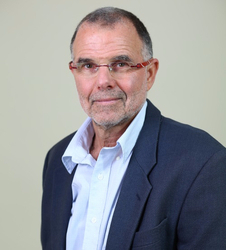The first article identified the essential qualities managers look for when recruiting new team members. It also revealed the gaps between what managers think they require and the way they act. This article discusses the essential qualities managers wish to improve and enhance in themselves, in comparison to the qualities they look for in potential employees.
The Marker magazine published the results of a survey it conducted in cooperation with Afeka -the Academic College of Engineering, a few weeks ago. This article presents some of the most important insights emerging from the survey and thoughts of three leading HR and recruitment managers. The article also discusses the differences I found between what managers think they require and their actions.
A survey regarding the characteristics required for successful management was conducted seven years ago. The survey’s analysis and results revealed that participants rated “mentoring abilities” one of the ten most important qualities of a successful manager.
Do you remember the days when we worked six days a week? Has moving to five days had a bad effect on employers or employees? Has efficiency decreased? Have we been achieving less?
The CEO of Leumi Bank, Mr. Hanan Freidman, has recently made a public announcement which revolutionizes the service the bank provides to its customers. Hanan committed to personally make sure that all customers’ requests are resolved within 24 hours and if not, customers are encouraged to communicate with him on his private WhatsApp. This, among other actions the bank is implementing, will overturn the way customer service has been practiced in Israel for decades.
This article focuses on the principles of managing employees during wartime.
Dan was rushing to a meeting. He could not find parking space in the car park of the tower building. Suddenly he spotted a free parking slot. He accelerated towards the slot only to realize that a female driver was maneuvering her car into that slot. She drove backwards and forwards trying to steer her way between the lines. That was all Dan needed. He quickly pushed in front and parked his car, leaving the lady driver bewildered.
Does everyone know what other people earn in your company? If the answer is “yes”, is it official information or is it spread by word of mouth? What effect does knowing what other people earn have on gender pay? How does it affect employee’s motivation?
A few days ago, I went shopping at a D.I.Y store Upon entering, I was directed to the department I was looking for, but no staff member was present. It took me a few minutes to locate someone who was able to tell me the name of the employee responsible and a few more minutes to find the employee who answered my questions about the product I wanted to buy.
Today I present five CEO’s excellent decisions that led them to great achievements. Some of those decisions were taken at a moment of crisis and turned things around. Others were taken by intuition and led the way to success. Making these decisions required courage and determination.
This article is not about momentary misjudgments or wrong decisions made on the spur of the moment. It is about mistakes which are made by CEOs who are driven by approaches that, in my opinion, are incorrect and can cause substantial negative impact on business results.
For the last eight years I have been publishing articles dedicated to International Women’s Day, which falls on March 8th. Why publish an article dedicated to International Women’s Day? Is it an admission that my other articles do not address women on all other days of the year? No, not at all. All my articles address both men and women, but the articles written specially for International Women’s Day examine the unique aspects related to women in business.
A separation won’t stop a couple from thinking about each other. In the same way, termination of employment doesn't stop employers and fired employees from talking about one another. Managers and employees continue to mention previous employees’ names, and dismissed individuals continue to talk about their former place of work.
I was on my way to a meeting with Ilan, Dovi and a few other people when I received a message from Yigal asking me to check something for him. Before joining the meeting, a few minutes too late, I opened my messages for a brief glance. I then entered the meeting noting to myself to get back to Yigal right after the meeting.
Someone once called me for advice. He told me he was self-employed and asked if I could help him collect money his customers owed him. The amount of the debt was about 1 million NIS. He worked for two years without receiving payment.
While bike riding with a group of friends, A. and H. began a heated argument. As I got closer to them I heard it was about a bike riding event that took place many years ago, and they each had a different memory of. Each was convinced their memory was more accurate, and as often happens in such cases, they only listened to each other in order to quickly contradict each other. This wasn’t a dialogue, but two monologues.
Every year, CofaceBDI and The Marker magazine conduct a survey, on the topic "the 100 best companies to work at in Israel". The survey had about 150 thousand participants, and also uses internal surveys by the above companies. The survey then asked 2,000 participants to rank the parameters according to their importance.
I once met with a CEO of a big organization we very much wanted to work with. From the beginning I looked at him with an encouraging smile. He answered in the same optimistic spirit. We grabbed a cup of coffee and settled in the meeting room, opening with some small talk. He mentioned he likes to listen to a certain radio program, of which I am also a frequent listener, and shared his opinions of it, with which I agreed.
One of the first stages of personal coaching is identifying personal goals. Not defining, but identifying. We don’t choose pretty words and decide those are our values only because they look good. Personal values are an inherent part of us.
When you get into a cab, the first question the driver asks you is - where are you going? You probably always have an answer to that. After all, you wouldn't get in a cab without a destination in mind. Yet I meet people, and even businesses, with no goals. And without goals, you can’t have purposeful progress.
At 6:15 I started riding my bicycle towards Ramat Ha'Nadiv and we started making our way up to Mansur el-Aqeb. We were supposed to meet Uri there. When we reached the top, there was no sign of Uri. We waited. Uri didn’t arrive, nor call. We tried calling him, and there was no answer. After about fifteen minutes, we started riding again, heading north. A short while later, Uri came riding towards us, smiling.
Javier is a young tour guide, Until recently, he had a lot of work. He speaks Spanish fluently, and as a result he had, among is other clients, many Birthright groups from South America.
And then came the Coronavirus, and Javier found himself without work, and with the realisation that life is unlikely to return to how it was anytime soon.
A medical start-up I worked with in the past faced a considerable schedule delay. I suggested the CEO display the company's goals and schedules in a prominent location, breakdown company goals to personal ones assigned to each managers, and thus delegate responsibility to them.
My last article dealt with the question – how to approach the crisis in your business. Among other issues, I discussed employee retention vs. employment costs. In this article I'm going to take a big step forward, and present the opportunity this crisis offers you, to engage employees with company goals.
In some companies, working with improvement teams brings quick, clear, and considerable success. On the other hand, in others the work done by improvement teams is accompanied by frustration, and has no quick and clear results. Why? What's the difference?
wonder of wonders, CEOs who aren’t machine-maintenance people, are sure they "know enough", or "know best", how to maintain the "human machines" in their company. And if not the CEO, then one of the executives will be able to do it, in addition to their regular job.
At first results seem great. Especially when before the authoritative manager there was an indecisive one. Now decisions are made quickly and everybody falls in line. But this kind of management suffocates the company. It suppresses positive initiatives and when the authoritative CEO makes a mistake no one will dare correct them or point out the possible harm.
The kibbutz assembly needed to approve participation of a team from the company in a professional conference in Italy. I remember a heated debate. Travelling abroad was rare, and every trip was a cause for envy. In the assembly, a suggestion was raised – instead of one of the executives, "Sarah", a kibbutz member, will go, because she hadn’t been abroad yet.
I examined 13 well-known and proven management methods from all over the world, which I myself use, and asked the participants to rank them through three questions: familiarity with the method, experience with the method, and how successful it was for them.
Everyone can contribute something to someone else. For an employee, knowing this and feeling they can do something meaningful for someone else, brings great satisfaction. When your employees renovate a youth club in the nearest city, or help kids with homework at the community center – they feel incredibly meaningful.
 My First Book: Manage! Best Value Practices for Effective Management
My First Book: Manage! Best Value Practices for Effective Management
The book brings together a set of tools that every CEO should know, presenting them in a clear, concise and consistent fashion that will leave the reader with comprehensive and useful knowledge to assist them in their careers as managers.
|
Get Updated on New Posts Get my orinigal professional artciles for Managers of all levels. |
 |